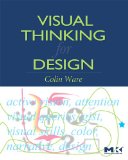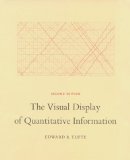due before Tuesday, January 26
The goal of this reading is to give you an overview of what visualization is about. I’d like you to read at least one of the book chapters listed and (if I am able to get the scan in time), a chapter from Tufte who comes at it from the design perspective.
While these readings are focused on infovis, it does give a nice overview of the general topic:
- Tamara Munzner. Visualization. Chapter 27 of Peter Shirley, Steven Marschner et al. Fundamentals of Computer Graphics, 3e. AK. Peters, 2009.
This is a chapter from the 559 textbook (if you took CS559 this year and have the new edition of the book). Otherwise, Tamara has a PDF of the chapter on her page here. Or, I have a copy in the course protected directory here. (see the posting about the protected directory).
An additional/alternative reading is the first chapter from the “original” infovis book. In some sense, this is a better chapter, but its also a little dated. There is a scan of it in the course protected directory here.
- Card, Mackinlay, Schneiderman. Information Visualization. Chapter 1 of Card, Mackinlay, Schneiderman, Readings in Information Visualization: Using Vision to Think. Morgan Kaufman (Academic Press), 1999.
I’d also like you to read the first chapter of Tufte’s book series:
- Edward Tufte. Graphical Excellence. Chapter 1 of The Visual Display of Quantitative Information. 2nd edition (any edition is OK). Graphics Press, 2001.
A scan of this chapter is in the protected directory here.
There is an assignment that is due the same day, independent of this reading (here).
Please leave a comment on which ones you’ve read, and any thoughts you have. If you read both of the InfoVis ones, I’m curious which one you prefer. If you read an infovis one and Tufte, you might comment on how different the “Visualization Scientist” perspective is from Tufte’s “Designer” perspective.
Since the reading is posted late, I understand that not everyone will get to the Tufte reading. If you don’t read it before class, please read it afterwards.












